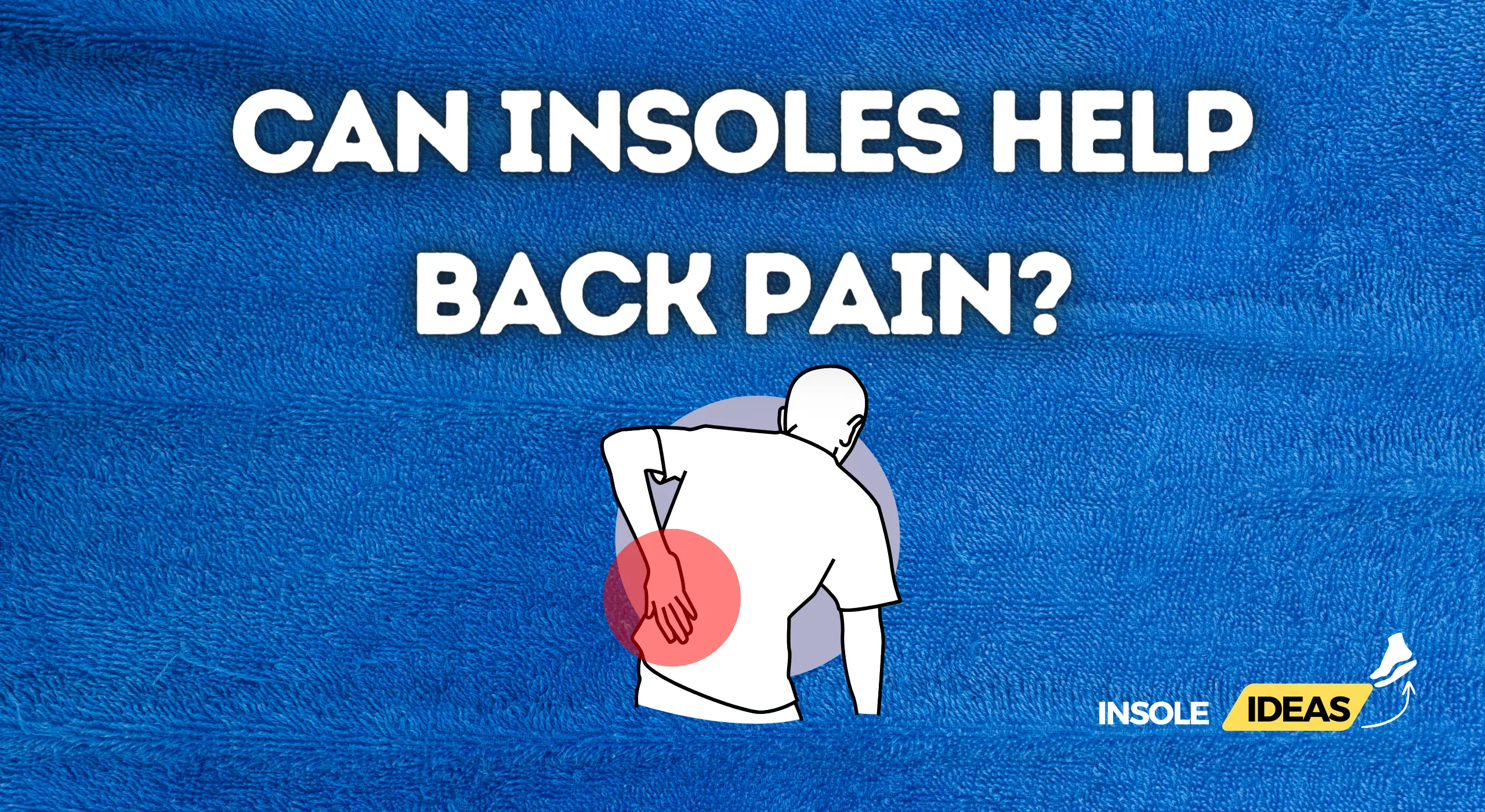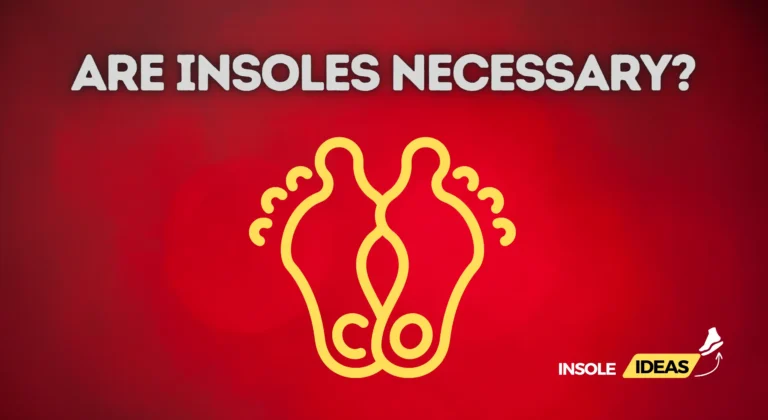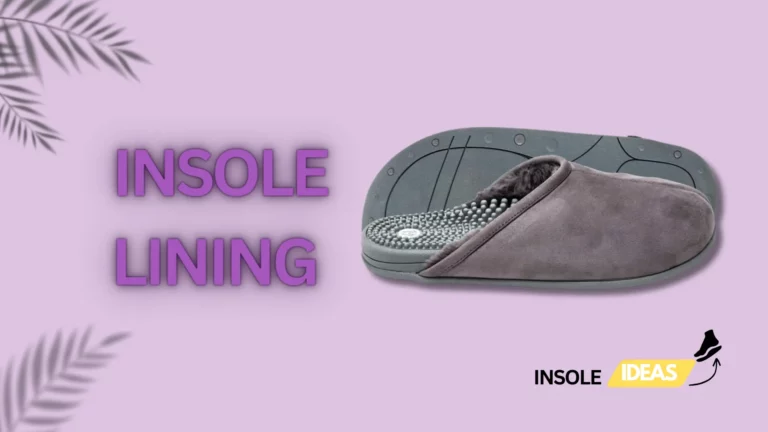Can insoles help back pain?
Explanation of Back Pain
Back pain is a common ailment that affects millions of people worldwide and can vary from mild discomfort to severe, debilitating pain. It can occur anywhere along the spine, from the neck to the lower back, and may be acute or chronic. Back pain can result from various factors, including muscular strain, poor posture, degenerative conditions, and injuries. Understanding the underlying causes of back pain is crucial for effective management and treatment.
Role of Insoles in Addressing Back Pain
Insoles play a significant role in addressing back pain by providing support, cushioning, and alignment to the feet, which can help alleviate strain on the back muscles and spine. By improving foot biomechanics and redistributing pressure, insoles can promote better posture and reduce the risk of developing or exacerbating back pain. Choosing the right insoles tailored to individual needs and foot conditions can enhance their effectiveness in addressing back pain.
Causes of Back Pain
Muscular Imbalances and Strain
Muscular imbalances and strain are common causes of back pain, particularly in the lower back region. Imbalances between the muscles supporting the spine can lead to asymmetrical loading and strain, resulting in discomfort or pain. Factors such as prolonged sitting, poor lifting techniques, and repetitive movements can contribute to muscular imbalances and strain. Insoles can help alleviate back pain associated with muscular imbalances by providing support and stability to the feet, which can help distribute weight more evenly and reduce strain on the back muscles.
Poor Posture and Alignment
Poor posture and alignment can also contribute to back pain by placing undue stress on the spine and surrounding muscles. Slouching, hunching over, or standing with improper alignment can lead to muscle tension, spinal misalignment, and discomfort. Insoles designed to improve posture and alignment can help address back pain by providing structural support and encouraging proper positioning of the feet. By promoting better alignment from the ground up, insoles can help reduce the strain on the back and alleviate associated discomfort.
Degenerative Conditions and Injuries
Degenerative conditions such as osteoarthritis, spinal stenosis, and herniated discs, as well as injuries such as sprains, strains, and fractures, can also contribute to back pain. These conditions may affect the spine’s structural integrity, causing inflammation, nerve compression, and pain. While insoles may not directly treat degenerative conditions or injuries, they can provide support and cushioning to help mitigate discomfort and improve mobility. In some cases, orthotic insoles may be prescribed to address specific foot biomechanical issues contributing to back pain, such as overpronation or flat feet.
Mechanism of Insoles in Alleviating Back Pain
Redistribution of Pressure and Weight
Insoles are crucial in redistributing pressure and weight throughout the feet, indirectly alleviating back pain. By supporting the arches and cushioning the heels, insoles help distribute the body’s weight more evenly across the foot surface. This reduces excessive pressure on specific foot areas, improving posture and reducing strain on the back muscles. Additionally, insoles with metatarsal pads or arch support can help offload pressure from the forefoot, further promoting a more balanced weight distribution.
Improving Posture and Alignment
One of the primary mechanisms through which insoles alleviate back pain is by improving posture and alignment. Proper foot alignment is essential for maintaining a neutral spine position and reducing stress on the back muscles. Insoles designed to support the natural arches of the feet and provide stability can help align the feet, ankles, and knees, promoting better overall posture. By keeping the arches and preventing excessive pronation or supination, insoles encourage a more upright stance and reduce the risk of developing poor posture habits contributing to back pain.
Cushioning and Shock Absorption
Insoles offer cushioning and shock absorption properties that help reduce the impact of walking, running, or standing on hard surfaces. By absorbing the shock generated with each step, insoles minimize the jarring forces transmitted through the feet and up the legs, ultimately reducing strain on the lower back. Additionally, cushioned insoles provide a softer surface for the feet to rest on, which can alleviate discomfort associated with prolonged standing or walking. The cushioning effect of insoles helps reduce fatigue and muscle soreness in the feet, ankles, and legs, which can indirectly contribute to improved comfort and reduced back pain.
Effectiveness of Insoles for Back Pain
Research Findings on the Effectiveness of Insoles
Numerous studies have investigated the effectiveness of insoles in alleviating back pain, with many demonstrating positive outcomes. Research suggests that properly fitted insoles can help improve posture, reduce pressure on the spine, and ease discomfort associated with various musculoskeletal conditions. Some studies have specifically examined the use of orthotic insoles in individuals with chronic back pain and found significant improvements in pain levels, functional ability, and overall quality of life. While more research is needed to fully understand the mechanisms and long-term effects of insole use for back pain, existing evidence supports their effectiveness as part of a comprehensive treatment approach.
Personal Testimonials and Experiences
Many individuals suffering from back pain have reported positive experiences with using insoles as part of their treatment regimen. Personal testimonials often highlight the relief provided by insoles in reducing discomfort, improving posture, and enhancing overall comfort during daily activities. Users commonly praise the supportive features of insoles, such as arch support and cushioning, for helping alleviate strain on the back and promoting better spinal alignment. While personal experiences may vary, anecdotal evidence suggests that insoles can be valuable in managing back pain and improving overall quality of life.
Types of Insoles for Back Pain
Arch-Support Insoles
Arch-support insoles are designed to provide additional support to the natural arches of the feet, which can help improve foot alignment and reduce strain on the back muscles. These insoles typically feature a firm arch support that facilitates equal pressure distribution across the foot, promoting better posture and alignment. Arch-support insoles are beneficial for individuals with flat feet or fallen arches and those with overpronation or excessive foot pronation.
Orthotic Insoles
Orthotic insoles are custom-made or prefabricated devices designed to address specific biomechanical issues and provide personalized support to the feet. Healthcare professionals often prescribe these insoles and may feature customized arch support, heel cups, or metatarsal pads tailored to the individual’s foot anatomy. Orthotic insoles help correct abnormal foot mechanics, such as excessive pronation or supination, which can contribute to back pain. By providing targeted support and alignment, orthotic insoles help alleviate strain on the back muscles and promote better overall foot function.
Cushioned Insoles
Cushioned insoles are designed to provide a soft and comfortable surface for the feet to rest on, offering enhanced shock absorption and pressure relief. These insoles typically feature foam or gel padding that helps cushion the feet and reduce the effects of hard surface walking or standing. Cushioned insoles benefit individuals seeking relief from foot fatigue, muscle soreness, and prolonged standing or walking discomfort. While they may not provide the same level of support as arch-support or orthotic insoles, cushioned insoles offer added comfort and can help reduce overall strain on the back and lower extremities.
Recommendations and Best Practices
When to Consider Using Insoles for Back Pain
Individuals experiencing back pain should consider using insoles when traditional methods such as rest, ice, and over-the-counter pain medication fail to provide adequate relief. Insoles can be particularly beneficial for individuals whose back pain is exacerbated by poor foot biomechanics, such as flat feet, overpronation, or high arches. Additionally, those who spend long hours standing or walking on hard surfaces may benefit from using insoles to cushion and support the feet, thereby reducing strain on the back muscles.
Choosing the Right Type of Insoles
Selecting the correct type of insoles is essential for effectively managing back pain. The choice of insoles depends on factors such as foot type, severity of back pain, and individual preferences. For those with fallen arches or flat feet, arch-support insoles may provide the necessary support to address biomechanical abnormalities and reduce stress on the back muscles. Those with specific foot conditions or structural abnormalities may benefit from orthotic insoles, which are custom-made to address individual needs. Alternatively, individuals seeking added comfort and cushioning may opt for cushioned insoles, which provide a softer surface for the feet and help reduce impact during walking or standing.
Other Complementary Treatments or Preventive Measures
In addition to using insoles, individuals with back pain can benefit from incorporating other complementary treatments and preventive measures into their daily routine. This might involve stretches to increase flexibility and mobility and exercises to strengthen the core muscles and correct posture. To treat underlying musculoskeletal problems and relieve back pain, physical therapy, and chiropractic adjustments might be helpful. Furthermore, maintaining a healthy weight, practicing good ergonomics, and avoiding prolonged sitting or standing can help prevent back pain from worsening.
Conclusion
Summary of the Role of Insoles in Alleviating Back Pain
Insoles are crucial in alleviating back pain by providing support, cushioning, and foot alignment. This can help reduce strain on the back muscles and promote better posture. By redistributing pressure and weight, improving posture and alignment, and offering cushioning and shock absorption, insoles can effectively alleviate discomfort associated with various causes of back pain.
#### B. Final Thoughts on Their Efficacy and Importance in Back Pain Management
Insoles are a valuable tool in managing back discomfort and can significantly enhance the lives of those afflicted with this prevalent ailment. Even though insoles alone might not be enough to treat every case of back pain, they can be a helpful part of an all-encompassing treatment approach when paired with other therapies and preventative measures. By choosing the right insoles and incorporating them into daily footwear, individuals can experience reduced pain, improved comfort, and enhanced mobility, ultimately leading to better overall back health and well-being.





